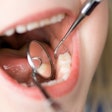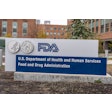Most cavities are preventable through regular brushing, the use of fluoride toothpaste, and flossing. Yet prevention is not equally accessible for all families. For many children, especially those in lower-income communities, the only reliable form of cavity prevention is fluoridated water.
Over the years, municipalities have discussed removing fluoride from public water systems, often citing concerns about broader health effects. What we do know, however, is what happens when fluoridation disappears. Two well-documented cases, from Juneau, AK (2007), and Calgary, Alberta (2011), demonstrate that the consequences are measurable, inequitable, and costly.
Cavities as a chronic disease burden
 Dr. Steven Spitz.
Dr. Steven Spitz.
Dental caries remains among the most common chronic diseases in children. Left untreated, decay progresses to pain, infection, emergency room visits, and hospitalizations.
In pediatric patients, advanced disease often requires treatment under general anesthesia, a procedure that carries risk and consumes scarce surgical resources. Every preventable case adds costs for families, strains public insurance programs, and increases the workload of already taxed dental teams.
Fluoridation as an equalizer
Unlike regular dental visits, fluoridated water reaches everyone. It protects children and adults regardless of income, education, or access to care. Removing this baseline preventive measure widens inequities.
Data from Medicaid programs in New York and Louisiana indicate that children in non-fluoridated areas undergo more invasive dental procedures, including hospital-based treatment, than their peers with access to fluoridated water. For rural and low-income communities, where dental provider shortages are common, losing this preventive shield is especially damaging.
The U.S. Centers for Disease Control and Prevention lists community water fluoridation among the top 10 public health achievements of the 20th century. It is effective, safe, and silent, working in the background long before patients ever sit in a dental chair.
Evidence from Juneau and Calgary
The 2018 journal BMC Oral Health reported on Medicaid-eligible children in Juneau, AK, after fluoridation ended in 2007. The findings were clear: Children in the non-fluoridated group required significantly more caries-related procedures, and per-patient treatment costs were 28% to 111% higher. The heaviest burden fell on children born after cessation, who experienced the greatest number of procedures and the highest costs.
A 2021 study in Community Dentistry and Oral Epidemiology compared Calgary, which ended fluoridation in 2011, with the still-fluoridated city of Edmonton. Seven years later, grade 2 children in Calgary had a strikingly higher prevalence of cavities. Decay in primary teeth was reported in 64.8% of Calgary children compared to 55.1% in Edmonton. Researchers concluded that cessation disproportionately harmed disadvantaged children, underscoring the public health value of universal fluoridation.
Clinical consequences for patients
When fluoride is removed from water systems, the downstream clinical impact is predictable. Children present with more multisurface cavities, crowns, and extractions. Pediatric cases requiring root canals or hospital-based general anesthesia are rising. For families, these procedures are financially and emotionally draining. For communities, they translate into higher costs for public insurance programs and longer wait times in already strained operating rooms.
The pattern observed in Alaska and Canada reinforces what dental teams across the U.S. know. When baseline prevention is stripped away, the profession is left managing the fallout of advanced disease rather than focusing on prevention.
Impact on dental teams and practices
The effects extend beyond patients to the clinicians who care for them. For dental teams, more untreated decay means:
- Longer chair times per patient
- Heavier restorative workloads reduce the time for preventive care
- Increased emergency visits disrupt schedules
- Increased use of general anesthesia, especially in pediatrics
These shifts take a toll. Hygienists and assistants face heavier workloads while dentists struggle with higher stress and an increased risk of burnout. Workforce shortages compound the challenge, especially in safety-net clinics and rural areas. What should be a balanced practice of prevention and restoration becomes a daily cycle of urgent disease management.
Massachusetts as an example
In Massachusetts, 120 communities serving more than 4.2 million residents, or 62% of the state, fluoridate their water. The Massachusetts Dental Society, like the ADA, strongly supports this measure. The evidence is consistent: No credible, peer-reviewed U.S. research has shown optimal fluoridation to be unsafe, while decades of data confirm its effectiveness in reducing cavities and narrowing oral health disparities.
National projections of cessation
Recent modeling underscores the stakes. A 2023 study in JAMA Health Forum estimated that eliminating community water fluoridation nationwide could lead to 25 million additional children developing cavities within just five years.
The projected economic cost is nearly $10 billion in additional treatment. For a typical pediatric dental office, this could mean hundreds of additional decayed teeth to restore, more emergency cases, and greater demand for complex procedures under general anesthesia.
These figures highlight what dentists witness in microcosm every day: Fluoridation protects patients and prevents disease. Without it, oral health deteriorates and the demand for care surges.
Why this matters for the profession
Removing community water fluoridation does not simply lead to an increase in cavities. It reshapes the practice of dentistry. Preventive visits give way to emergency management. Teams face higher stress, longer hours, and rising burnout. Clinics already struggling with staffing shortages and access challenges are forced to stretch further. Pediatric practices contend with surgical backlogs, while public health clinics see surges in untreated disease that exceed available resources.
Fluoridation is not only about protecting smiles; it is about sustaining the capacity of the dental workforce to deliver care efficiently and equitably.
Dentists play a critical role in advocating for this proven safeguard. Community water fluoridation is one of the simplest, most effective ways to prevent disease, reduce inequities, and support patients and professionals alike. The evidence from Juneau, Calgary, Medicaid populations, and national modeling all point in the same direction: its removal leads to more cavities, higher costs, and greater strain on practices.
Protecting fluoridation protects patients, strengthens communities, and safeguards the profession’s ability to care. To abandon it would undo decades of progress in oral health and compromise the efforts of both the public and the dental teams committed to serving them.
Dr. Steven Spitz attended both the Harvard School of Dental Medicine/Boston VA Medical Center, where he received his prosthodontic certificate, and Tufts University School of Dental Medicine. He completed a general practice residency through Jackson Memorial Hospital/Miami VA in Florida. Dr. Spitz has practiced in the Boston area for over 20 years, founding Smileboston Cosmetic and Implant Dentistry in 1997. He is the president of the Massachusetts Dental Society.
The comments and observations expressed herein do not necessarily reflect the opinions of DrBicuspid.com, nor should they be construed as an endorsement or admonishment of any particular idea, vendor, or organization.




















